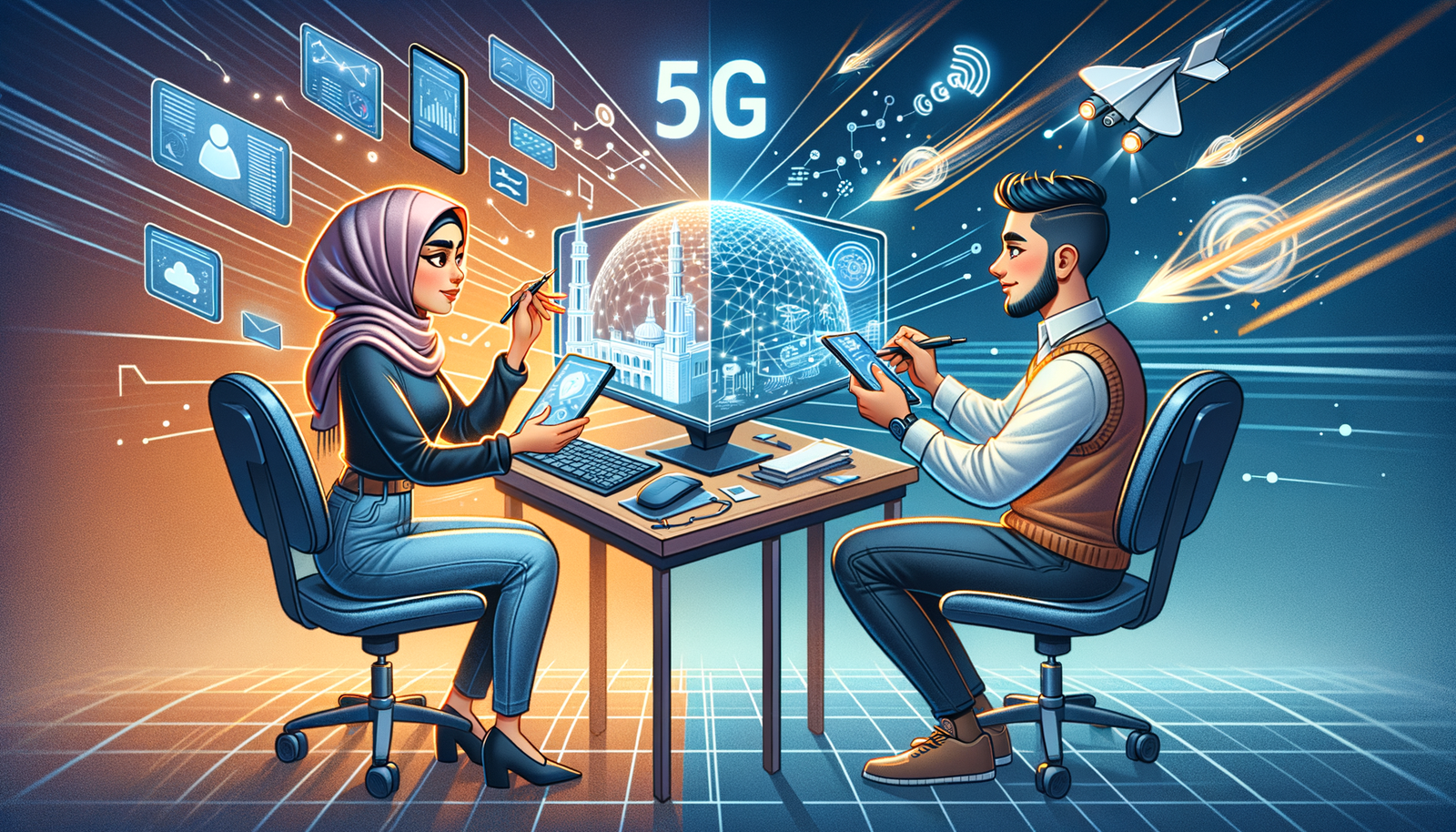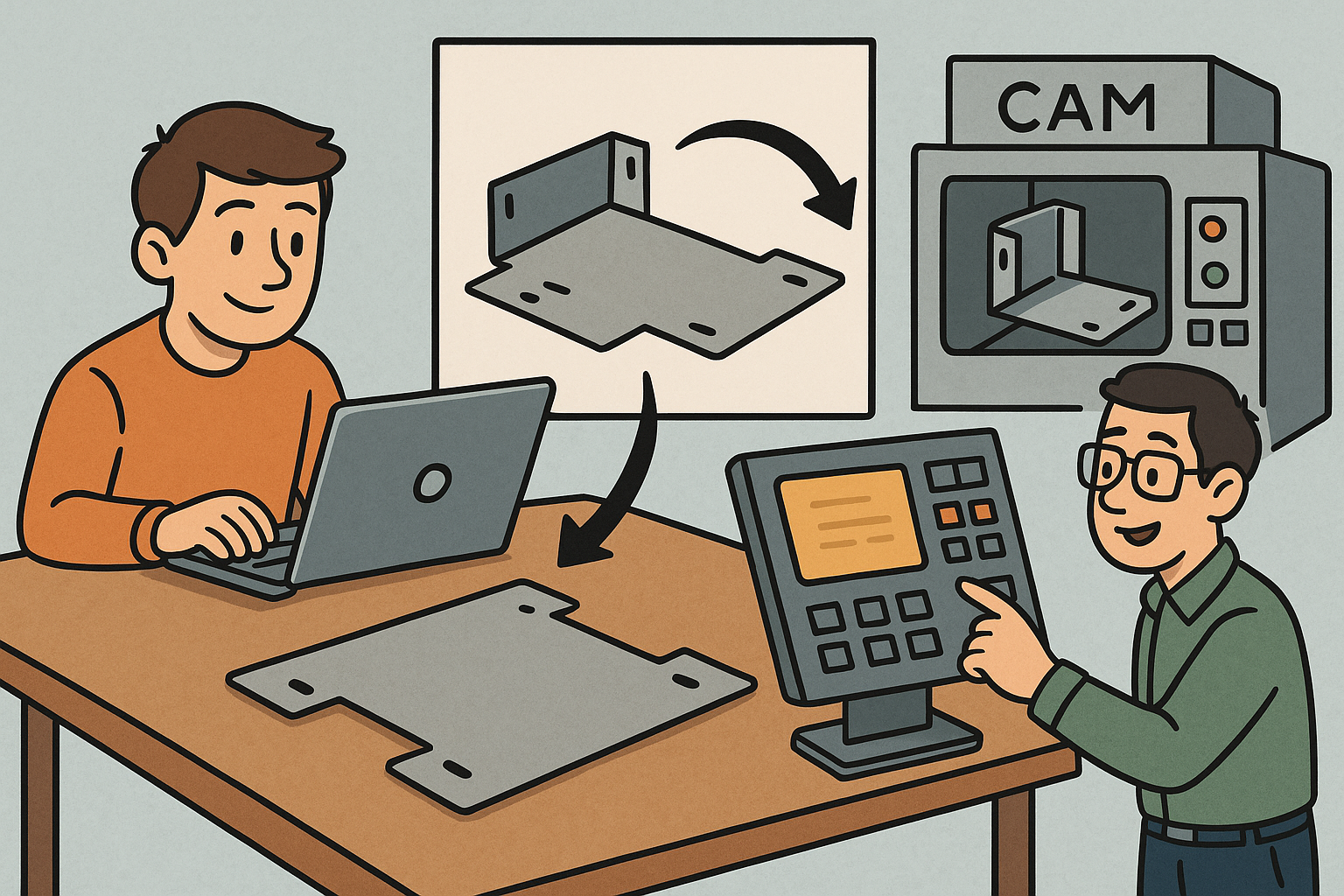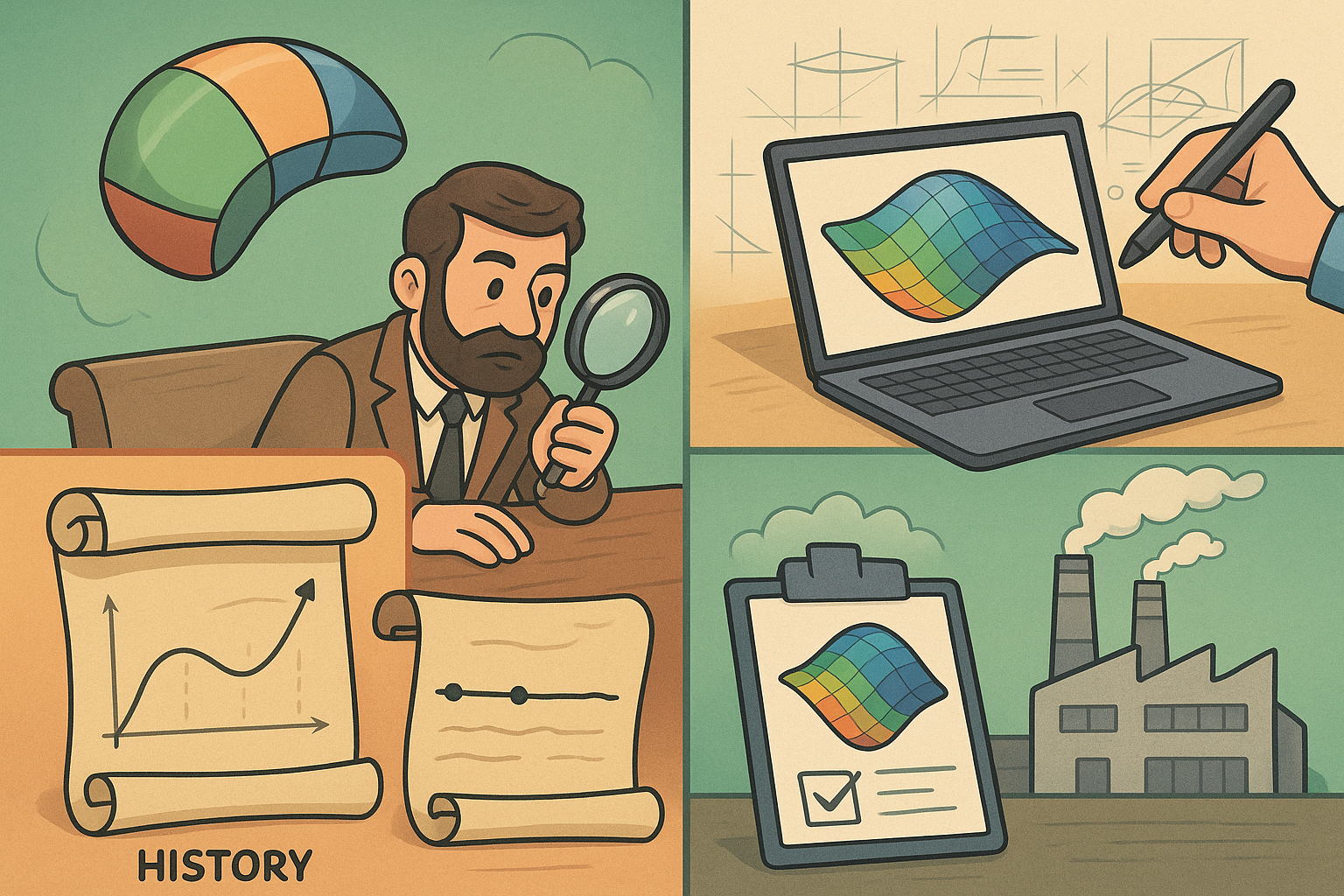Your Cart is Empty
Customer Testimonials
-
"Great customer service. The folks at Novedge were super helpful in navigating a somewhat complicated order including software upgrades and serial numbers in various stages of inactivity. They were friendly and helpful throughout the process.."
Ruben Ruckmark
"Quick & very helpful. We have been using Novedge for years and are very happy with their quick service when we need to make a purchase and excellent support resolving any issues."
Will Woodson
"Scott is the best. He reminds me about subscriptions dates, guides me in the correct direction for updates. He always responds promptly to me. He is literally the reason I continue to work with Novedge and will do so in the future."
Edward Mchugh
"Calvin Lok is “the man”. After my purchase of Sketchup 2021, he called me and provided step-by-step instructions to ease me through difficulties I was having with the setup of my new software."
Mike Borzage
Design Software History: The Transformative Impact of 5G Technology on Remote Design Collaboration
October 23, 2024 6 min read


Introduction to 5G Technology
The advent of 5G technology marks a significant milestone in the evolution of wireless communication. As the fifth generation of mobile networks, 5G brings forth a revolutionary set of features that transcend the capabilities of its predecessors. One of the most prominent attributes of 5G is its increased bandwidth and speed, which allows for data transmission rates that are exponentially higher than those of 4G networks. This enhancement facilitates the seamless streaming of high-definition content, rapid download and upload of large files, and supports a vast array of data-intensive applications that were previously constrained by bandwidth limitations.
Another critical feature of 5G is its lower latency, which is the delay before a transfer of data begins following an instruction for its transfer. With latency reduced to as low as one millisecond, 5G networks enable real-time responsiveness in communication systems. This ultra-low latency is crucial for applications that require immediate feedback, such as remote control of machinery, virtual reality experiences, and, importantly, collaborative design processes where instantaneous interaction is paramount.
Furthermore, 5G technology supports greater device connectivity, accommodating up to a million devices per square kilometer. This capability is essential in the burgeoning Internet of Things (IoT) landscape, where an extensive network of devices and sensors communicate and collaborate over the internet. For the design industry, this means that a multitude of devices—from computers and tablets to smart tools and equipment—can be interconnected, fostering a more integrated and cohesive design environment.
Connectivity plays a pivotal role in modern design processes. In an increasingly globalized market, design teams are often distributed across different geographical locations, necessitating robust and reliable communication channels. The role of collaboration in contemporary design workflows has never been more critical, as it enables the pooling of diverse expertise and perspectives, leading to more innovative and refined outcomes. The growing need for remote collaboration tools is underscored by the demands of a global workforce, making technologies like 5G indispensable in facilitating efficient and effective collaboration among team members worldwide.
Impact of 5G on Remote Design Collaboration
The integration of 5G technology into remote design collaboration infrastructures heralds a new era of efficiency and innovation. One of the most immediate benefits is the enhancement of communication tools. With 5G's high-speed connectivity, real-time communication through video conferencing platforms becomes more stable and clear, supporting high-definition audio and video streams without latency issues or disruptions. This enables design teams to conduct virtual meetings that closely emulate face-to-face interactions, fostering better understanding and synergy among participants.
Additionally, instant messaging applications benefit from reduced lag times, allowing for more dynamic and fluid conversations. The improved file sharing capabilities for large design files are particularly transformative. Designers frequently work with sizable files such as 3D models, high-resolution images, and complex project documents. Transferring these files over traditional networks can be time-consuming and hinder productivity. With 5G, these files can be uploaded and downloaded swiftly, enabling team members to access and work on the latest versions without delay.
The impact of 5G extends to changes in collaborative design software. Cloud-based platforms like Autodesk Fusion 360 and Onshape have revolutionized how designers work by enabling access to powerful tools without the need for high-end local hardware. 5G enhances these platforms by providing the speed and reliability needed for smoother interaction in cloud-based CAD environments. Real-time co-editing features are significantly improved, allowing multiple designers to work simultaneously on the same project with minimal latency. This level of collaboration fosters a more integrated team dynamic, with instant feedback and the ability to iterate rapidly on designs.
In various design fields, these advancements have practical applications. In architecture, for instance, architects can make real-time adjustments based on client feedback during virtual walkthroughs of building models. The ability to modify designs instantly while discussing them with clients enhances engagement and satisfaction. In product design, teams spread across different locations can collaboratively work on prototypes, rapidly iterating and refining designs. The seamless communication and data transfer enabled by 5G shorten development cycles and bring products to market more quickly.
Challenges and Considerations
Despite the promising benefits of 5G technology, there are several challenges and considerations that organizations must address to fully leverage its potential. One significant limitation is the infrastructure requirements necessary for widespread 5G implementation. Deploying 5G networks requires substantial investment in new hardware, including a dense array of small cell antennas and upgraded network equipment. This complexity means that some regions, particularly rural or economically disadvantaged areas, may experience delays in accessing 5G services. The disparities in infrastructure development can lead to uneven adoption rates, affecting how organizations in different locations can participate in enhanced remote collaboration.
Another critical consideration is the security implications of increased connectivity. As more devices and systems become interconnected through 5G networks, the potential attack surface for cyber threats expands. Concerns regarding data privacy and protection are amplified when sensitive design information is transmitted over these networks. Intellectual property theft, unauthorized access, and data breaches pose serious risks to organizations. To mitigate these threats, companies must implement robust cybersecurity measures, including encryption protocols, secure authentication methods, and comprehensive data governance policies to safeguard sensitive information in a remote setting.
The issue of the digital divide is also a pressing concern. Not all organizations or regions have equal access to the resources necessary to adopt 5G technology. This inequality can exacerbate existing disparities in technological capabilities and economic opportunities. Teams operating in areas without reliable 5G access may find themselves at a disadvantage, unable to fully engage in advanced remote collaboration. Addressing these inequalities requires concerted efforts from governments, industry stakeholders, and technology providers to ensure broader accessibility and prevent the exclusion of less-resourced participants from the benefits of 5G-enhanced collaboration.
Future Outlook
Looking ahead, the evolution of 5G technology is expected to further transform remote design collaboration, integrating with emerging technologies to create even more sophisticated tools and processes. One area of significant potential is the integration with artificial intelligence (AI) and augmented reality/virtual reality (AR/VR). The high-speed, low-latency capabilities of 5G make it possible to run AI algorithms and AR/VR applications in real-time, enhancing design visualization and analysis. Designers could collaborate in virtual environments, manipulating 3D models and prototypes as if they were physically present together, regardless of their actual locations.
Anticipated enhancements in tools for remote collaboration include more intuitive and immersive interfaces, leveraging haptic feedback and advanced gesture controls. The ongoing transformation of design processes will see design software companies adapting their products to leverage 5G capabilities fully. Companies like Dassault Systèmes and Siemens Digital Industries Software are investing in cloud-based solutions and collaborative platforms that take advantage of 5G's strengths. These initiatives aim to create a more interconnected and agile design environment, where real-time data exchange and collaboration are integral components of the workflow.
The future also holds the promise of democratizing design collaboration, provided that the challenges of accessibility and inequality are addressed. As 5G networks become more widespread and affordable, more organizations and individuals will be able to participate in global design projects. This inclusivity can lead to a richer diversity of ideas and innovations, driving the industry forward. Continued innovation and adaptation within design software practices are essential to fully capitalize on the benefits of 5G, ensuring that the digital design landscape of the future is both dynamic and accessible to all stakeholders.
Conclusion
In summary, 5G technology stands as a transformative force poised to significantly enhance remote design collaboration. Its increased bandwidth and speed, coupled with lower latency and greater device connectivity, address many of the limitations faced in previous generations of wireless communication. For design professionals, this means more efficient workflows, real-time collaboration, and the ability to engage with complex, data-intensive applications seamlessly. However, realizing the full potential of 5G requires overcoming challenges related to infrastructure, security, and accessibility.
The need for continued innovation and adaptation within design software practices is paramount. As companies and individuals navigate the evolving technological landscape, embracing 5G capabilities can lead to more dynamic and effective collaboration. Efforts must be made to ensure that all stakeholders, regardless of location or resources, can participate effectively in this new paradigm. By addressing the challenges proactively and investing in inclusive strategies, the design industry can fully capitalize on the benefits of 5G, ushering in a future where remote collaboration is not only possible but also optimized for creativity and success.
Also in Design News

Rhino 3D Tip: Orient3Pt: Precise Three‑Point Alignment and Placement
December 12, 2025 2 min read
Read More
Constraint-Aware Sheet Metal Flattening: Embedding Manufacturing Logic into CAD-to-CAM Workflows
December 12, 2025 11 min read
Read More
Design Software History: Surface Interrogation in CAD: History, Techniques, and Industrialized Fairness Analysis
December 12, 2025 13 min read
Read MoreSubscribe
Sign up to get the latest on sales, new releases and more …


